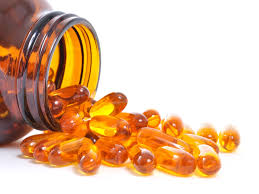
Diagnosed with Cancer? Your two greatest challenges are understanding cancer and understanding possible side effects from chemo and radiation. Knowledge is Power!
Learn about conventional, complementary, and integrative therapies.
Dealing with treatment side effects? Learn about evidence-based therapies to alleviate your symptoms.
Click the orange button to the right to learn more.
- You are here:
- Home »
- Blog »
- side effects ID and prevention »
- Low Vitamin D Levels in Stroke Patients Up Risk of DVT
Low Vitamin D Levels in Stroke Patients Up Risk of DVT

low serum vitamin D levels were independent predictors of DVT in patients with ischemic stroke during inpatient rehabilitation stay in China.
Because I have an increased risk of stroke (Afib) I normally blog about the risk of a first stroke. The study linked below talks about the stroke patient’s risk of a DVT aka blood clot after they have suffered an ischemic stroke.
My first goal is to establish vitamin D3’s importance for your health. Vitamin D3 has been shown to reduce the risk of a host of chronic diseases, cancer, and dementia. I’ve been supplementing with vitamin D3 for years. I first identified my own low levels of my serum vitamin D3 in the early 2000’s when I first read about the importance of vitamin D3 for people with my type of blood cancer, multiple myeloma.
The insuing years have identified increased risks of health issue after health issue. Now, back to vitamin D3 and stroke risk. I have my blood tested for a number of different things- vitamin D3, cholesterol, PSA, etc. It’s easy to order and go to a local Lab Corp. location and recieve my results on my computer.
Preventing a second stroke is important because, according to the centers for disease control “About 185,000 strokes—nearly 1 of 4—are in people who have had a previous stroke...About 87% of all strokes are ischemic strokes, in which blood flow to the brain is blocked.2″
Further, increasing the vitamin D3 levels in your blood is pretty easy (and inexpensive). Your first choice is to go outside and sit in the sun for a few minutes. But if you live in a place like I do, Cleveland, Ohio, and your day is cloudy and/or a trip outside is a bit of a challenge, consider supplementing with vitamin D3.
To learn more about nutrition and supplementation to lower your risk of stoke, scroll down the page, post a question or comment. I will reply to you ASAP.
- Learn More About Blood Clots aka Deep Vein Thromboses- click now
- To Learn More About Hyper-viscosity in Multiple Myeloma- click now
- To Learn about Too Much vitamin D3- click now
Thank you,
David Emerson
- Cancer Survivor
- Cancer Coach
- Director PeopleBeatingCancer
Recommended Reading:
- Vitamin D3, Chronic Disease and Cancer
- Vitamin D Blood Levels and the Risk of Dementia and Alzheimer’s
- Vitamin D3-improves balance, muscle strength and minimizes falls.
Types of Stroke
- Ischemic Stroke (Clots)
- Hemorrhagic Stroke (Bleeds)
Low Vitamin D Levels Are Associated With the Development of Deep Venous Thromboembolic Events in Patients With Ischemic Stroke
“The objective is to determine whether a low serum 25-hydroxyvitamin D (25(OH)D) level is associated with an increased incidence of deep venous thromboembolic events in patients with ischemic stroke.
One hundred eighty persons admitted consecutively for inpatient rehabilitation at the Department of Rehabilitation of the First Affiliated Hospital of Wenzhou Medical University with a diagnosis of ischemic stroke from January 2015 to December 2015 were enrolled.
The following demographic data were collected: age, sex, body mass index, and history of risk factors. The levels of 25(OH)D and the presence of deep vein thrombosis (DVT) by routine duplex imaging were also recorded. The value of 25(OH)D needed to predict DVT was analyzed using logistic regression analysis, after adjusting for the possible confounders.
We found that 80% of patients admitted to the acute inpatient rehabilitation unit had low levels of vitamin D.
Forty-seven patients had DVT, and the incidence of DVT was 26.1% within 3 weeks after the stroke event. With all patients taken together, DVT occurrence as a dependent variable with the sufficient group as the reference used for vitamin D levels in the logistic analysis, deficiency of vitamin D was independently associated with the development of DVT (odds ratio = 4.683, 95% confidence interval: 1.396-15.703, P = .012).
In conclusion, low serum 25(OH)D levels were independent predictors of DVT in patients with ischemic stroke during inpatient rehabilitation stay in China. This finding reveals the critical role played by 25(OH)D in the pathogenesis of DVT.”
Vitamin D deficiency and incident stroke risk in community-living black and white adults
“In multivariable models adjusted for socio-demographic factors, co-morbidities and laboratory values including parathyroid hormone, lower 25(OH)D concentrations were associated with higher risk of stroke (25(OH)D >30 ng/mL reference; 25(OH)D concentrations 20–30 ng/mL, hazard ratio [HR] 1.33, 95% confidence interval [95%CI] 0.89,1.96; 25(OH)D <20 ng/mL, HR 1.85, 95%CI 1.17,2.93)…
Vitamin D deficiency is a risk factor for incident stroke and the strength of this association does not appear to differ by race…”


